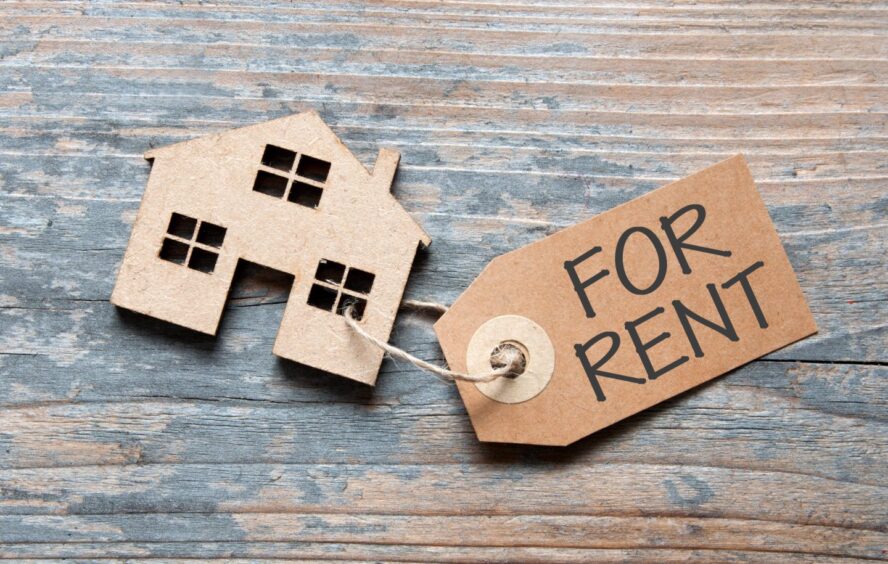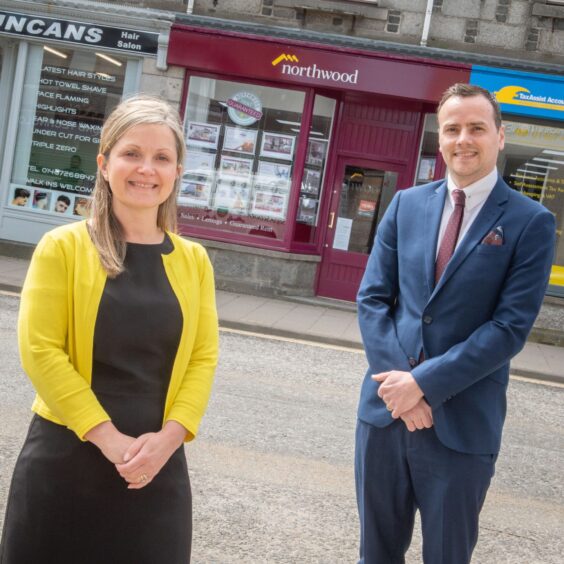The private rented sector in Aberdeen has seen a welcome upturn in its fortunes.
It follows a long slump brought on by the downturn in the North Sea oil and gas industry a decade ago.
The market for leased homes suffered badly after thousands of workers lost their jobs in the offshore sector and subsequently left the north-east.
But the economic future of the Granite City is starting to look up again as a variety of fresh energy projects move ahead.
The need for extra employees to be brought into the area from elsewhere has led to much-needed fresh demand for rented accommodation.
Aberdeen rents up 7.8% year-on-year
Property letting agency Citylets has highlighted how rents are rising in the north-east.
The average monthly cost for a home in Aberdeen in the third quarter of 2023 had jumped by 7.8% year-on-year to £832. Rents for three-bedroom properties surged by 11.8% to £1,108.
But rents in the Granite City are still lagging well behind Scotland’s other big cities.
The typical rent in Edinburgh in Q3 soared by 16.5% to £1,546 a month.
Glasgow’s roared ahead by 15.6% to £1,208 and Dundee’s rocketed by 16.9% to £928.
The rental market continues to be a hot topic, with both landlords and tenants continuing to face a range of challenges throughout the UK.”
Adrian Sangster, Aberdein Considine
The average amount tenants have to pay in Scotland in the last quarter hit £1,115 a month – a year-on-year jump of 13.7%.
Despite these impressive rises, the home rental sector in Britain is facing major hurdles.
Adrian Sangster, leasing director at Aberdeen-based law firm Aberdein Considine, explained: “The rental market continues to be a hot topic, with both landlords and tenants continuing to face a range of challenges throughout the UK.
“From the perspective of landlords, increasing regulation and – it seems – government policies designed to place heavier burdens on them, life probably feels pretty difficult.
“There is significant anecdotal evidence to suggest many landlords are finding the current landscape too complex and economically unattractive, and as such are taking the decision to leave the market, along with their properties.
“For tenants, rents continue to rise – much of which is attributed to a decrease in the number of properties available for rent.”
Many landlords are finding the current landscape too complex and economically unattractive.”
Mr Sangster added: “In Scotland, we’ve had emergency legislation in place for more than a year.
“Landlords and the market will be looking to March next year which will see the expiry of the second period of extension after the introduction of the Cost of Living Tenant Protection Scotland Act last October.
“As for the future, the industry could be forgiven for wondering, with a degree of concern, what they will face next.”
That there continues to be a steady move by landlords away from the market is hardly surprising, Mr Sangster said.
He continued: “A shortage of properties inevitably leads to higher prices.
“Open market rents have risen as a whole for four consecutive quarters.
“And with talk of further legislation and rent caps there are likely to be more landlords exiting the market. The country will simply continue to face ongoing housing problems.”
Government rent controls hitting housing market investor confidence
So, is there a solution in sight?
Mr Sangster said: “The biggest issue is clearly the lack of housing – an issue which the Scottish Government has promised to solve over the years but has yet to fulfil.
“The build-to-rent sector has the potential to help with this shortage, however, the prospect of longer-term rent controls on top of recent government interventions is inevitably damaging investor confidence.
“There is also a major requirement for proper and substantive dialogue between lawmakers and the industry. Something which has been severely lacking to date.
“In view of this, it remains vital that we have a thriving lettings market to ensure the country can meet the needs of those who require a safe and comfortable place to live.”
Demand is substantial and will continue to grow, he said, adding: “Despite the challenges, there are still many good reasons to be a landlord.
“The more that is understood by them, the better equipped they will be to play what is a critical role in the housing market.”
What else is driving rent rises in and around the Granite City?
There have been several major boosts for the economy in the Aberdeen area this year.
In June the north-east was named as an investment zone after an agreement between the UK and Scottish governments. It is estimated the move could be worth £80 million of funding over five years.
Tax incentives and the funding are expected to attract investment, improve skills, provide specialist business support and improve local infrastructure.
Then, in July, the Acorn carbon capture and storage development was selected for Track 2 of the UK Government’s £1 billion funding competition – hailed as a “defining milestone”.
Strong demand for North Sea oil and gas rights in 33rd licensing round
Acorn, at the gas terminal at St Fergus in Aberdeenshire, is expected to deliver many thousands of jobs.
And, in a welcome boost for the North Sea oil and gas sector, there was an impressive response at the start of this year to the launch of the 33rd oil and gas licensing round.
The North Sea Transition Authority received 115 applications from 76 companies for 258 blocks and part-blocks.
According to the UK Government, encouraging domestic gas production will mean lower-carbon fuels for the country as well as benefits for families and businesses.
The oil and gas industry supports more than 200,000 jobs and adds about £16bn to Britain’s economy every year.
Market experts confirm upward trend in and around Granite City
Meanwhile, several property experts have given their views to Citylets on the current home-letting market in the Aberdeen area.
Aileen Merchant, of DJ Alexander, said: “Q3 has continued the upward trend that began in Q3 2022, with high demand for central one and two-bedroom properties.
“With confidence restoring in the oil and gas sector due to the announcement of new oil licences and the (Acorn) carbon-capture project, we have seen a much greater demand for high-quality, large family homes in desirable areas.”
Ms Merchant added: “The challenges of the rent-increase cap and eviction ban continue to pose challenges for landlords, especially with multiple rises in interest rates.
“However, rising rental prices and increased demand in the city see no sign of slowing down.”
Eduardo Prato, of Martin & Co, said: “Landlord and tenant activity accelerated throughout August and September. Our portfolio average rent increased by 5.7% in Q3, thanks to more high-end tenancies secured, as well as the natural increase of rents of our historic portfolio.
“Consistent, well-presented and well-maintained properties are key to seamlessly long-term tenancies.”
Rising rental prices and increased demand in the city see no sign of slowing down.”
Aileen Merchant, DJ Alexander
Matt Pullinger, of Northwood,said Q3 was “a very busy time for the rental market in Aberdeen”.
He added: “Month-on-month, we saw inquiries peaking at a new record level. Properties across all sizes have seen an increase in price on the open market due to high demand and lack of supply. Times to let have improved again this quarter, with some properties letting within hours and family homes seeing several applications.
“The economic environment across several sectors in Aberdeen is buoyant, creating positive news for many in the city and shire. We have also seen several investors coming to the market looking for help to set up tenancies and then self-manage.”
Chris Minchin, of Winchesters, said: “Q3 in Aberdeen has shown a real surge in rental prices which have risen to meet demand across most property sizes. One and two-bedroom properties have shown the biggest demand, with stock levels dropping dramatically.
“An interesting trend was seen within the student market, where large HMO (house in multiple occupation) properties have been left on the market without tenants.
“This ties back to Covid, and third and fourth-year students generally having smaller friendship groups, and choosing to live in one and two-bedroom properties.
Is quality supply running dry?
“However, we expect this trend to recover over the next two years. Quality supply is going to be the challenge over the next quarter.”
It has been calculated that by the end of the last decade the private rented sector in Scotland had more than doubled in size since 1999. It accounted for around 340,000 households – one in seven of all homes in Scotland.







Conversation